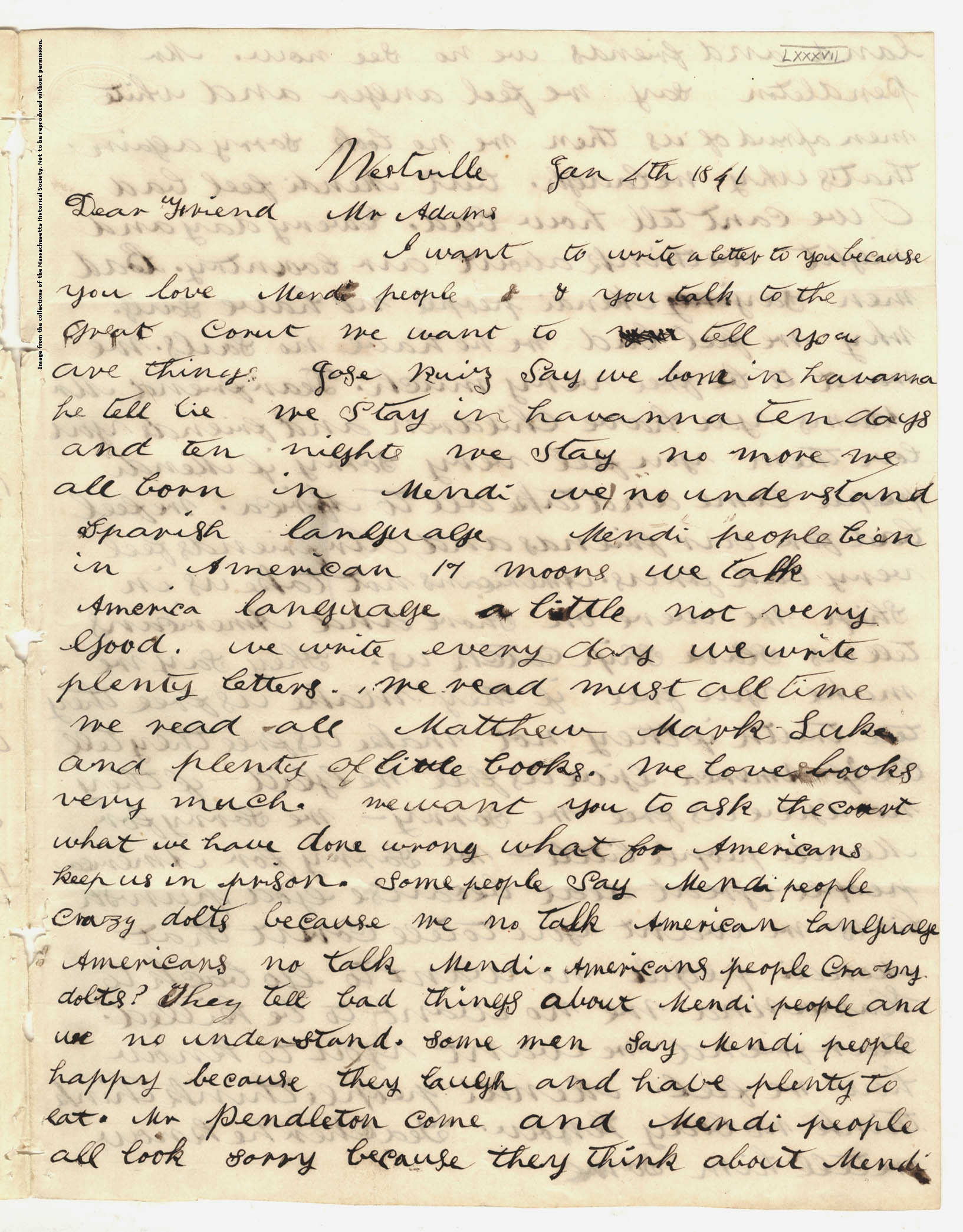In July 1839, 53 Africans revolted aboard the Spanish slave ship Amistad as they were being transported by their enslavers from Havana to another Cuban port. During the revolt, the Africans killed the ship’s captain and another crew member, and they demanded to be returned to Mendiland (now Sierra Leone). Because the Africans possessed limited navigational knowledge, the remaining Amistad crew were able to divert the vessel from its course. On 24 August a US revenue cutter seized the Amistad off Long Island. The Africans were held at New Haven, Connecticut, and their fate became the subject of heated debate, eventually leading to the US Supreme Court, where John Quincy Adams helped argue for their freedom.
Explore a selection of Amistad-related materials:
John Quincy Adams for the Defense
At the age of 73, former president John Quincy Adams appeared before the US Supreme Court and successfully defended the Africans who had seized the slave ship Amistad. In his diary, Adams recorded both details about the case and reflections on his involvement. Transcriptions of his diary for the years relating to the Amistad case are available on the John Quincy Adams Digital Diary, including the following entries:
- 1 October 1839: Adams records his interest in the case of the Amistad Africans.
- 17 November 1840: Adams describes visiting the Amistad Africans in New Haven and meeting with Roger Sherman Baldwin to discuss legal strategy.
- 12 December 1840: Adams describes his preparations for the case.
- 24 February 1841: Adams begins his defense of the Amistad Africans before the Supreme Court.
- 9 March 1841: Adams reflects on the Supreme Court verdict, which set the Amistad Africans free.
- 18 March 1841: Adams's involvement continues as he attempts to secure passage in a public vessel for the liberated Amistad Africans to return to Africa.
- 29 March 1841: Twenty days after the court’s decision, Adams reflected on the fight against the slave trade.
Kale and Kinna's Letters

In January 1841, two of the African men captured from the Amistad wrote letters to John Quincy Adams, who would soon defend them before the US Supreme Court. Kale and Kinna, the letters' authors, thanked Adams for taking the case and offered their encouragement as he prepared his oral argument. They also spoke of slavery, freedom, truth, justice, and their homeland in West Africa. See images of Kale's letter and Kinna's letter, both of which are in the Adams Family Papers.
Additional Resources
The Adams Family Papers contain a number of letters between John Quincy Adams and the men involved in the case. Search the Online Adams Catalog for more information. The MHS Beehive blog post, “My conscience presses me on”: John Quincy Adams and the Amistad Case, 1839–1842, also recounts Adams's involvement the case.
Watch current and former editors in chief of the Adams Papers Editorial Project and Professor Patrick Rael discuss the 1997 film Amistad.
Additionally, the MHS holds some of the papers of Joseph Story, a justice on the US Supreme Court during the Amistad trial, and the Noyes Family Papers, which contains a detailed description of the case.

